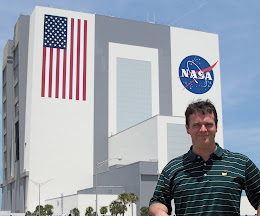(HOUSTON) -- Orbiting 240 miles high above earth, astronauts aboard the International Space Station use huge satellites in orbit to talk with controllers back at the Johnson Space Center in Houston.
On July 19, one astronaut aboard the orbiting complex called an iPhone 4 located in Mission Control to chat.
NASA astronaut Ronald Garan called an employee of the space center's iPhone to chat with a group of thirty visiting space tweeps -- those who use Twitter to chat and discuss space and science interests.
Garan, who is known as @Astro_Ron on the social network site, spoke for nearly two minutes to the group who threw questions at comments his way.
This aerospace reporter (@AbsolutSpaceGuy) was among those who spoke with the astronaut who commented at one point that it was past his bedtime.
This space tweep also recorded the conversation via his own iPhone 4, and is attached to this article.












